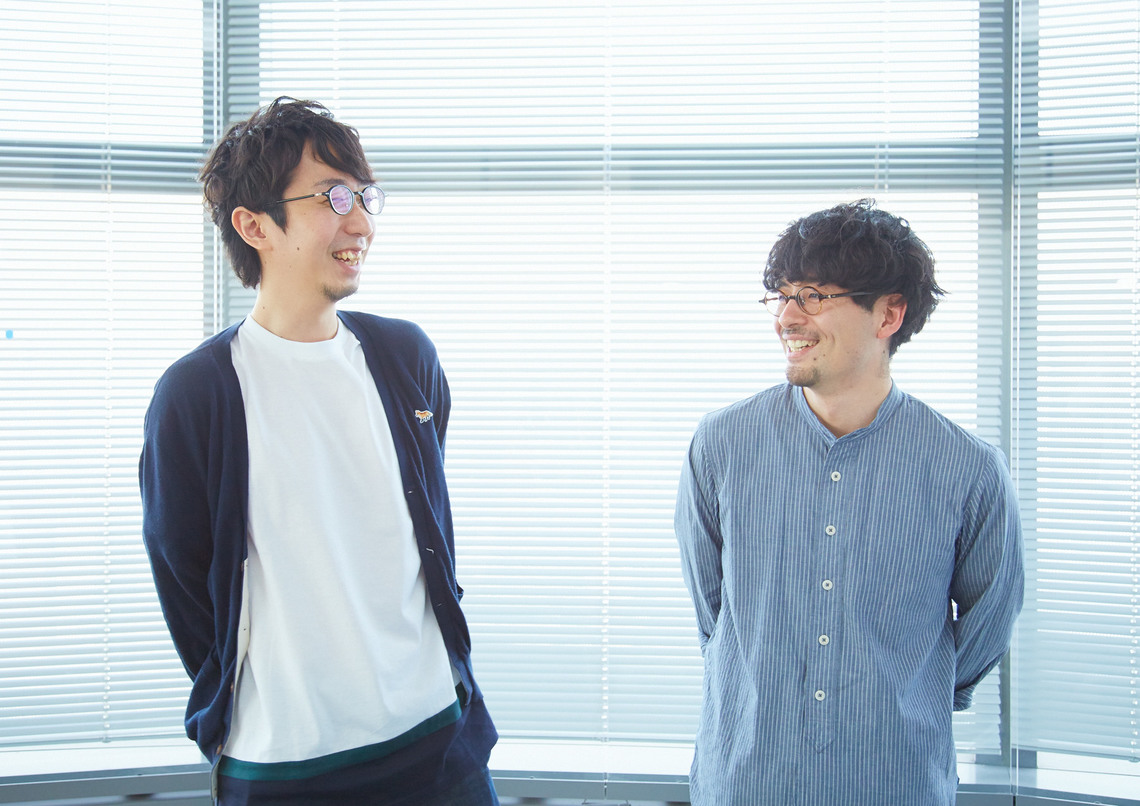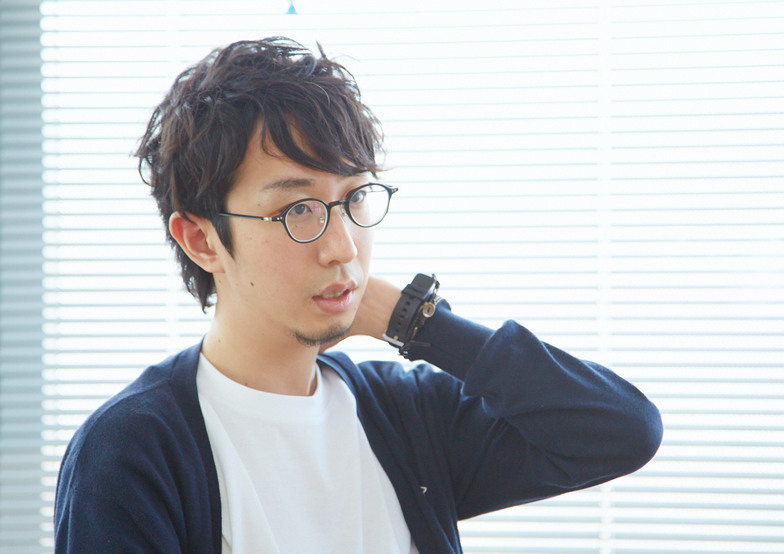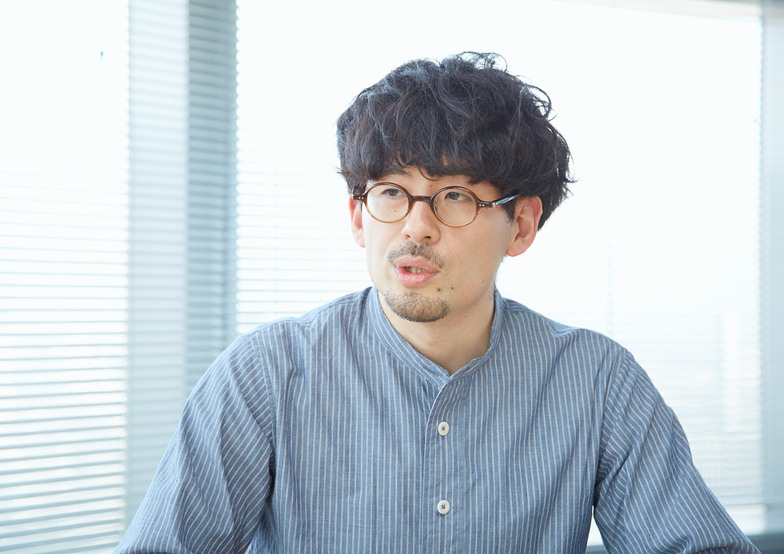"Going to Meet the People I Want to Meet!" Episode 7: Dentsu Inc. Event & Space Design Bureau's Yu Nishimuta met with Kappy-san of "Natsuyasumi". Kappy-san, who gained massive attention after web comics like "Facebook Police" —written on a whim—became viral hits. He finally left Kayac Inc. and launched his own company, "Natsuyasumi", as a manga artist. Nishimuta, wanting to collaborate on his own spatial development and event planning, arranged this conversation.
Interview and Composition: Aki Kanahara, Dentsu Inc. Event & Space Design Bureau

(From left) Kappy, Nishimuta
Mass and social should be considered separately
Nishimuta: While my style involves moving between mass media and social media, do you still separate mass media as its own category?
Kappy: The goals are completely different, so I definitely separate them. Going forward, I really want to get something adapted into a visual format. Anime, drama, movie—anything works. I feel you can't ignore mainstream stuff, so lately I've been buying and reading nothing but popular manga. And when you ask what "mainstream" means, adaptation is essential.
It's a common thing for web celebrities, but I'm not famous at all. Especially me—nobody in the world knows who I am. So I try to meet people who won't fawn over me. Like, I'll ask the guy at the hair salon, "What manga are you reading?" Even if I name my top 10 web manga thinking "maybe they know these," the only one they'd recognize is "One Punch Man." That's normal. There's no way they'd know "Kappi" (laughs). I think people only barely know about it once it gets animated or made into a drama.
Nishimuta: Even if it doesn't lead to me drawing manga as an output, I find Kappy's perspective on things interesting. So, I'd love to find a way to work together, maybe incorporating advertising or something like that.
Work that suits me is work people ask me to do
Kappy: Lately, I've started getting a few jobs that stray a bit from manga. Things like naming development work, or requests to draw illustrations as design pieces, not manga. I'm trying to be flexible about it.
Back in my student days, I consulted Shinya Nakajima from Tohoku Shinsha, saying, "I'm just an ordinary person, so I can't create anything wildly original. I'm not edgy, so I don't know what kind of work suits me." He told me, "The work that suits you is the kind people ask you to do." He said that people often asked to organize drinking parties are suited to that, and the person in charge of collecting money at parties is suited to that role. He said the work that suits you is the kind people usually ask you to do. That really stuck with me.
It's about creating something major that people will know. I believe the most famous manga online still loses to the most obscure manga in Jump. So I want to keep challenging myself to find ways to reach a large audience. I constantly get requests to draw advertising manga, so I guess that means I've found a niche that fits well in the world.
Nishimuta: Even in the event and space development field I work in, exhibition explanatory graphics—if done normally—actually risk becoming something nobody looks at.
I think design is about how to make information clear and easy to understand. Incorporating a manga artist's perspective into that can be quite interesting.
Just like building a story through pictures and narrative flow, how can we take a request like "Explain this" and package it in a way that's easy to understand? I sometimes think it might be worthwhile to have manga artists consider the structure of information design in that way.
Explanations become engaging content—readable stories enhanced with illustrations. Using this approach, like creating light content, can really open up new possibilities for spatial development.
Kappy: Yeah, really.
Nishimuta: Even graphs—instead of just plain Excel-like ones, incorporating infographics or making them a bit more manga-esque. Spatial design tends to get too serious in its expression, doesn't it?
Kappy: It does tend to get serious.
Nishimuta: But introducing a different perspective on information can make it incredibly engaging. Also, when we talk about real-world experiential value, we emphasize creating deep, authentic experiences before they spread socially. Yet, precisely because it's real, there are aspects where it can be light.
I think there's also a real-world approach as light content—like being able to casually touch and try things in person that you couldn't easily buy or even find opportunities to try.
Designing the Recipient's State of Mind
Kappy: In that sense, like I said at the start, it's about designing the viewer's state of mind. The idea that a lighter, more relaxed mindset makes people more receptive to ads and information. The ad comics I create – I see the final deliverable as just the "concept."
Whether I draw it myself or hire an artist, or whether I come up with storyboards for a commercial, the "project" can potentially deliver something completely different depending on how it's cooked up. There will inevitably be clients who just don't like that particular style of art. So, if that's the case, we change the art. If they say, "This time, we want a video," then we make a video. We're flexible.
Nishimuta: So you're doing this with a solid strategy, thinking things through carefully.
Kappy: When I joined Tokyu Agency, I thought I'd eventually go independent as an advertising planner. But I quickly realized going independent as a planner is incredibly tough. I only started calling myself a "manga artist" recently. At first, it felt awkward—a mix of shyness, modesty, and other feelings—and I hesitated to say it. But I realized I had to properly say "manga artist" because clients find it hard to commission work from someone with a title that doesn't clearly define what they deliver.
You know how people react to "planner"? Like, "What exactly do you do? Where do I pay you? Do you charge just for a quick chat?" It's like they don't really grasp what you do. Calling myself a "manga artist," though, makes it clear: "Oh, so you deliver your ideas in the form of manga." It's straightforward. If you start getting fancy with your title just to keep options open – like "Actually, I can do commercials too," or "If you add illustrators, I can work as an original creator too" – then maybe it's better to just say "manga artist" outright.
Nishimuta: It's easier to ask for work when your position is clearly defined, right?
Kappy: I realized I really need to state my title properly.
Nishimuta: Tell us what you want to challenge next as "Natsuyasumi." Also, why the company name "Natsuyasumi" (Summer Vacation)?
Kappy: Back at Tokyu Agency and Kayac, I'd think, "This is how it should be done," but clients would say, "Change it," so I'd have to. Or I'd have a proposal I wanted to make, but it probably wouldn't get approved. I was so overly conscious of "it's work" that I ended up unable to create anything. So, I chose the name "Natsuyasumi" (Summer Vacation) because the concept is to stop working as such, and just focus on creating things purely for enjoyment.
So, if I ever catch myself thinking even a little bit, "Well, it's work, so I guess I have to do it," then it's not summer vacation anymore, and I plan to stop.
Nishimuta: When I first heard it, I thought, "That's a really great name!" What was the company motto again?
Kappy: Our company motto is "Busy, but play." (laughs)
Nishimuta: That's brilliant! We've gone out for drinks and talked before, but this is the first time we've had such a deep conversation. I really agree with your point about how the audience's state of mind differs in advertising. And honestly, there hasn't been a manga that really hits that sweet spot. I feel like there's huge potential here.
Thank you.
<End>







